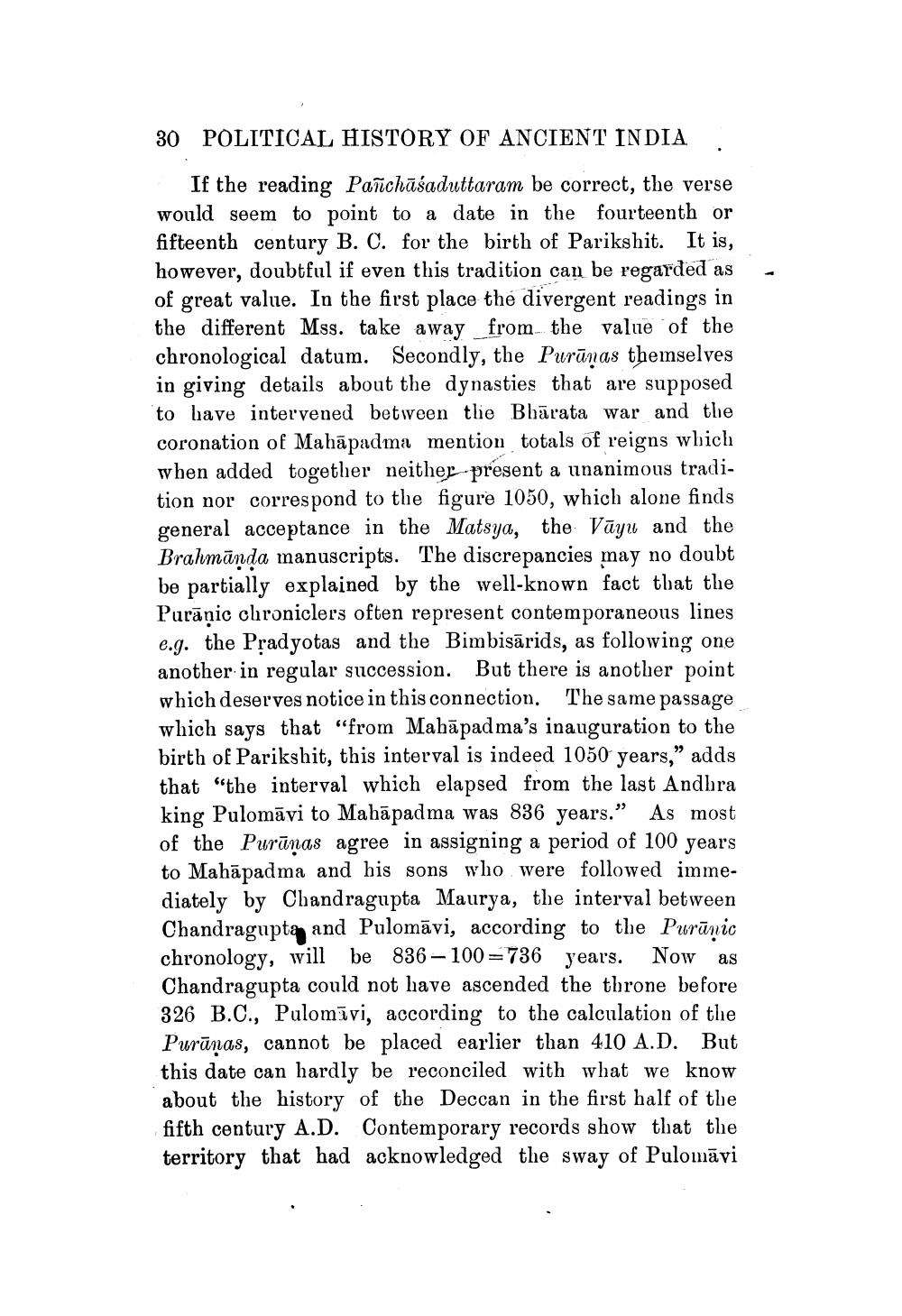________________
30 POLITICAL HISTORY OF ANCIENT INDIA
If the reading Paschāśaduttaram be correct, the verse would seem to point to a date in the fourteenth or fifteenth century B. C. for the birth of Parikshit. It is, however, doubtful if even this tradition can be regarded as of great value. In the first place the divergent readings in the different Mss. take away from the value of the chronological datum. Secondly, the Purūnas themselves in giving details about the dynasties that are supposed to have intervened between tlie Bhārata war and the coronation of Mahāpadma mention totals of reigns which when added together neither present a unanimous tradition nor correspond to the figure 1050, which alone finds general acceptance in the Matsya, the Vāyu and the Brahmānda manuscripts. The discrepancies may no doubt be partially explained by the well-known fact that the Purāņic chroniclers often represent contemporaneous lines e.g. the Pradyotas and the Bimbisārids, as following one another in regular succession. But there is another point which deserves notice in this connection. The same passage which says that “from Mahāpadma's inauguration to the birth of Parikshit, this interval is indeed 1050 years,” adds that "the interval which elapsed from the last Andhra king Pulomāvi to Mahāpadma was 836 years.” As most of the Purūnas agree in assigning a period of 100 years to Mahāpadma and his sons who were followed immediately by Chandragupta Maurya, the interval between Chandragupta and Pulomāvi, according to the Purānic chronology, will be 836-100=736 years. Now as Chandragupta could not have ascended the throne before 326 B.C., Pulomīvi, according to the calculation of the Purūnas, cannot be placed earlier than 410 A.D. But this date can hardly be reconciled with what we know about the history of the Deccan in the first half of the fifth century A.D. Contemporary records show that the territory that had acknowledged the sway of Pulomāvi




